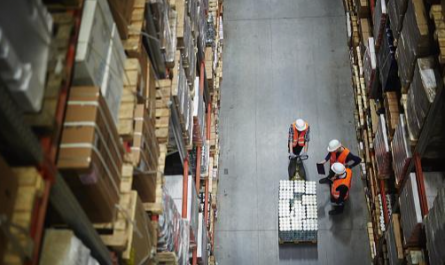Your car is a valuable investment, and you want to protect it from the harsh elements that can damage it. One solution is applying a paint protection film (PPF) on your car’s painted surfaces. But, for the best results, you need to ensure that your PPF is properly installed. This is where expert tips come in handy. Read on for some valuable installation insights that will help you apply your PPF like a pro.
Preparation is key
Before applying the PPF, you need to ensure that the surface to be protected is thoroughly cleaned. Any dirt, wax, or grease residue on the surface will affect the adhesion of the film, and it may not stick well to the car. You should also make sure that the temperature is right for the application. If it’s too cold, the PPF may not stretch well around curves, and if it’s too hot, it may stretch too much and become too thin.
Use a quality film and tools
The quality of the paint protection film you use can affect its effectiveness and longevity. Choose a high-quality PPF that can block UV rays, resist discoloration, and protect your car from scratches and stone chips. You also need the right tools for the installation process, such as a squeegee, an application fluid, and a blade. Using low-quality tools can damage the film, causing bubbles and creases that can be unsightly.
Follow the manufacturer’s instructions
PPF installation techniques vary depending on the film brand and type. Therefore, it’s crucial to follow the manufacturer’s instructions to the letter. These instructions will give you a step-by-step guide on how to apply the film, the right tools and temperatures to use, and how to remove any bubbles or creases that may form. Skipping any steps, or deviating from the manufacturer’s instructions can cause uneven application, which can compromise the effectiveness of the PPF.
Practice makes perfect
Applying a paint protection film is not as easy as it may sound. It requires skill and practice to get it right. Therefore, before applying the PPF on your car, it’s good to practice on a flat surface, say a window or a tabletop. This will help you get a feel of the process, and you’ll be able to identify any challenges you may face in the main installation process. It’s also a great way to test the quality of the film and the tools you plan to use.
Seek expert help
If you’re not confident in your installation skills or if you’re applying PPF for the first time, it’s always a good idea to seek expert help. A professional installer has the experience and skills to ensure that the film is applied correctly, and it’s aligned with your car’s contours. They also have the know-how of how to remove any bubbles that may form and how to avoid creases and other installation issues. That way, you can rest assured that your car is well-protected, and the paint protection film will last for a long time.
The road can be tough on your car. From rough terrain to harsh weather conditions, you want to ensure your car’s paint remains as pristine as possible. One way to protect your car’s exterior is by investing in a paint protection film. This clear wrap protects your car’s paint from scratches, nicks, and other damage while maintaining a sleek look. However, applying paint protection film can be tricky and requires skill. In this blog post, we’ll share expert tips on how to properly apply this film to ensure your car stays as protected as possible.
Make Sure the Vehicle is Clean and Dry
Before applying the paint protection film, ensure your car is clean and dry by washing it thoroughly. Avoid using abrasive sponges or brushes that can cause scratches. After washing the car, let it dry completely before applying the film to avoid water spots. Additionally, it’s essential to clean the areas where the film will be applied. Use a solution that is designed to remove dirt, dust, and any other debris that may have accumulated in those areas.
Cut the Film to Handleable Sizes
Use a razor blade or a precision knife to cut the film into manageable sizes. Large pieces of film can be difficult to work with, and can easily wrinkle or get misaligned. Smaller sizes are best when applying the film onto a complex shape or curve. By cutting the film down into smaller pieces, you can also avoid wasting the film, and can minimize the likelihood of errors.
Use a Slip Solution
A slip solution is a mixture of water and soap (sometimes alcohol is also added) that creates a slippery surface on the car’s surface to allow for easier positioning of the film. Using a slip solution minimizes the likelihood of bubbles and wrinkles forming. Additionally, make sure that the spray bottle you use to apply the slip solution sprays a fine mist rather than droplets. This prevents the formation of large droplets, which can cause issues when positioning the film.
Use a Squeegee to Remove Trapped Air Bubbles
It’s essential to use a squeegee to apply the film to your car’s exterior thoroughly. Air bubbles that can form between the film and the car’s surface are not only unattractive, but they can also become a weak link in the protective film. Once you apply the film, immediately begin using your squeegee to remove air bubbles and push the surface against the car’s exterior. Start from the center and work outward toward the edges. Fewer air bubbles will reduce the likelihood of the film lifting and peeling off from the surface of your car.
Use a Heat Gun to Finish
After applying the paint protection film onto your car’s surface, it’s crucial to use a heat gun to finish the installation. The application of heat helps in creating a perfect finish and eliminating any bubbles. Heating allows the adhesive on the protective film to activate, enhancing the bond between the film and the car’s surface. If you don’t have an automotive grade heat gun, a hairdryer will work just fine. Be sure not to get too close or keep heating one spot for too long; this can cause the film to melt.
Conclusion:
Paint protection film is a worthwhile investment, and it’s an excellent way to protect your car from the elements. However, it’s essential to ensure that the PPF is installed correctly to maximize its effectiveness. Careful preparation, using high-quality film and tools, following the manufacturer’s instructions, practicing on a flat surface, and seeking experts’ help are critical installation insights that will help you to apply your PPF like a pro. With these tips, you can rest easy knowing that your car is well-protected, and its paint is shielded from scratches, dirt, and other harmful elements.
Installing paint protection films is a great way to protect your car’s exterior from harmful elements, and add a sleek look to it. However, the self-install process can be challenging. Follow these expert tips to ensure the paint protection film installation is error-free. Preparing the car’s surface beforehand is key. Use a slip solution for easy positioning of the film, and avoid air bubbles from forming. These tips will ensure your car stays protected, and the paint finish retains its pristine look.

